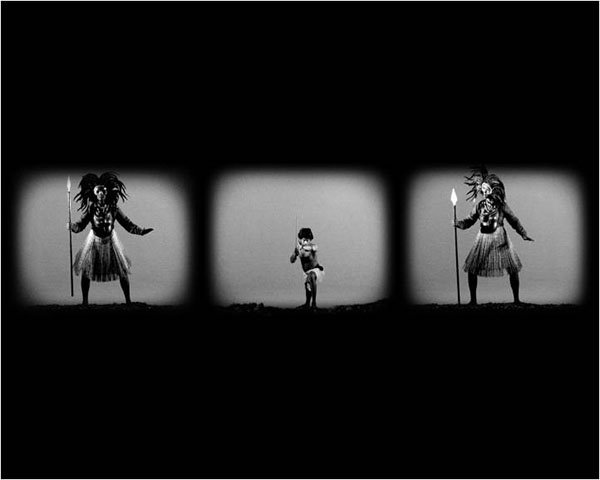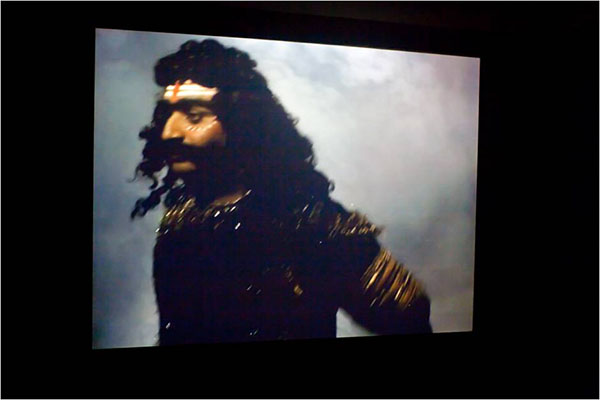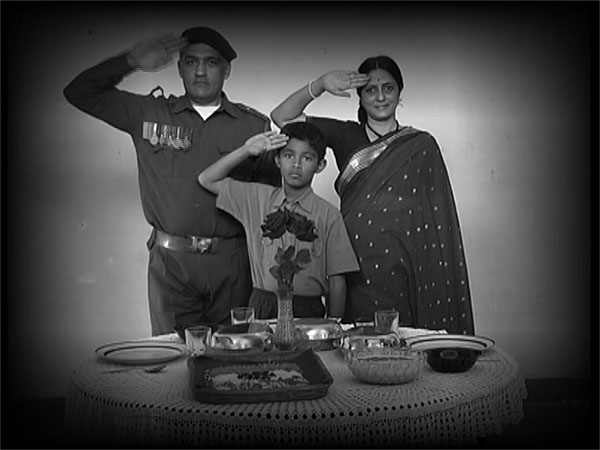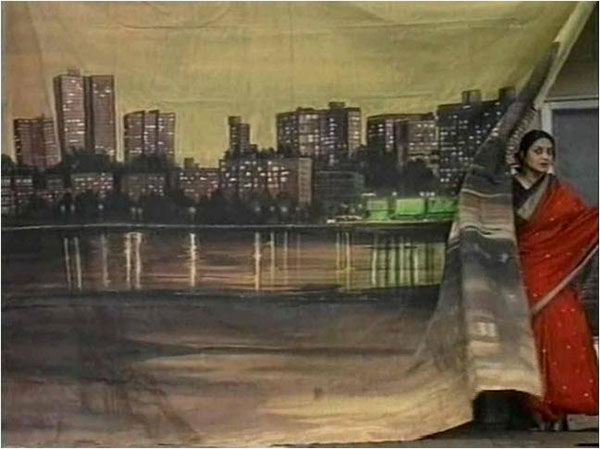
Indrajaala / Seduction
(2012)
Single Channel Or Three Channel Video
B&W, silent, 4 min 30 sec
See link
Notes
Taking from early ethnographic and silent film, three frames simultaneously invoke the incident of the cutting of the nose of the demoness Surpanakha by the Prince Lakshmana from the Ramayana.

Mrugayati / The Hunt ( 2012 )
Stop motion, colour, 1 min
See link
Synopsis
– a video created from still images of the demon chasing the princess, like a fragment from a recurring dream or nightmare.

Paris Autumn (2006)
An experimental short film created from still photographs
B&W 35 mins. English, with sound
Paris-India
Screening ratio 4:3
See link
Synopsis
“ Paris Autumn” is a work of fiction in the style of a gothic thriller, which tells the story of the artist’s stay in Paris in the autumn of 2005. While she rents a room in one of the oldest streets in the Marais, strange happenings begin to occur. It was then she realises she is living in the outhouses of the mansion that had once belonged to Gabrielle d’Estrées, King Henri IV’s favourite, who died, poisoned no doubt, at the age of twenty-six just as she was about to marry the king.
From that moment on, Pushpamala had to find out about this woman who had come to such a tragic end. Pushpamala’s quest begins at the Louvre, opposite The Fortune Teller by Caravaggio and continues in the kitsch atmosphere of the Chapelle des Petits-Augustine. The action takes place at various points throughout Paris that Pushpamala, stroller and detective graced with the gift of ubiquity, assembles into a strange map with Haussmannian perspectives, where the Eiffel Tower and cafés follow images of urban violence. Pushpamala seems to read the world like a “complex and stratified, open and enigmatic” literary work that she makes up as she weaves her way through a mysterious urban territory where, right down to the flow of the images, we find the “halting” nature of the City according to Benjamin, like a succession of paintings put together with brushstrokes. Bernard Zürcher

Rashtriy Kheer and Desiy Salad (2004)
(National Pudding and Indigenous Salad)
experimental short film
B&W, Mini DV, with sound,
11 min, English
screening ratio 4:3
See link
Synopsis
“Rashtriy Kheer and Desiy Salad” is a playful and ironic look at the modern Indian family as it imagined itself soon after independence. The film uses excerpts from the 1950s and 1960s recipe note books of the artist’s mother and mother-in-law, to create a montage of text, visuals and music between the military notes of the father, a Lt. Colonel in the army, the recipes and domestic notes of the heavily pregnant mother and the school boy son’s homework , all found on the pages of these family scrap books. The set is of an imaginary classroom, the classroom of the nation, where each character comes up in time to their own particular music and writes on a blackboard. The blackboard then becomes the palimpsest of an entire history.
The title of the film comes from two 1950s Independence Day recipes based on the colours of the Indian flag. It begins and ends with the Indian national anthem.

Indian Lady (2007)
Video loop
Colour, Silent, 31 secs, 1997
Perth, Australia
See link
Synopsis
As the “Indian Lady” Pushpamala, wearing a richly coloured Indian saree and bun, enters and exits the frame coyly dancing a silent ‘filmy’ dance in front of a painted backdrop of Mumbai. The artist commissioned a scenery painter to reproduce a tourist postcard of the city with a typical night view from the sea from Haji Ali, showing multi-storied buildings with their lights reflected in the water. The postcard represents the popular fantasy of a modern metropolis, more anonymous than particular. The woman tiptoes, gyrates, smiles, flirts, sings and seems to be telling a story.
